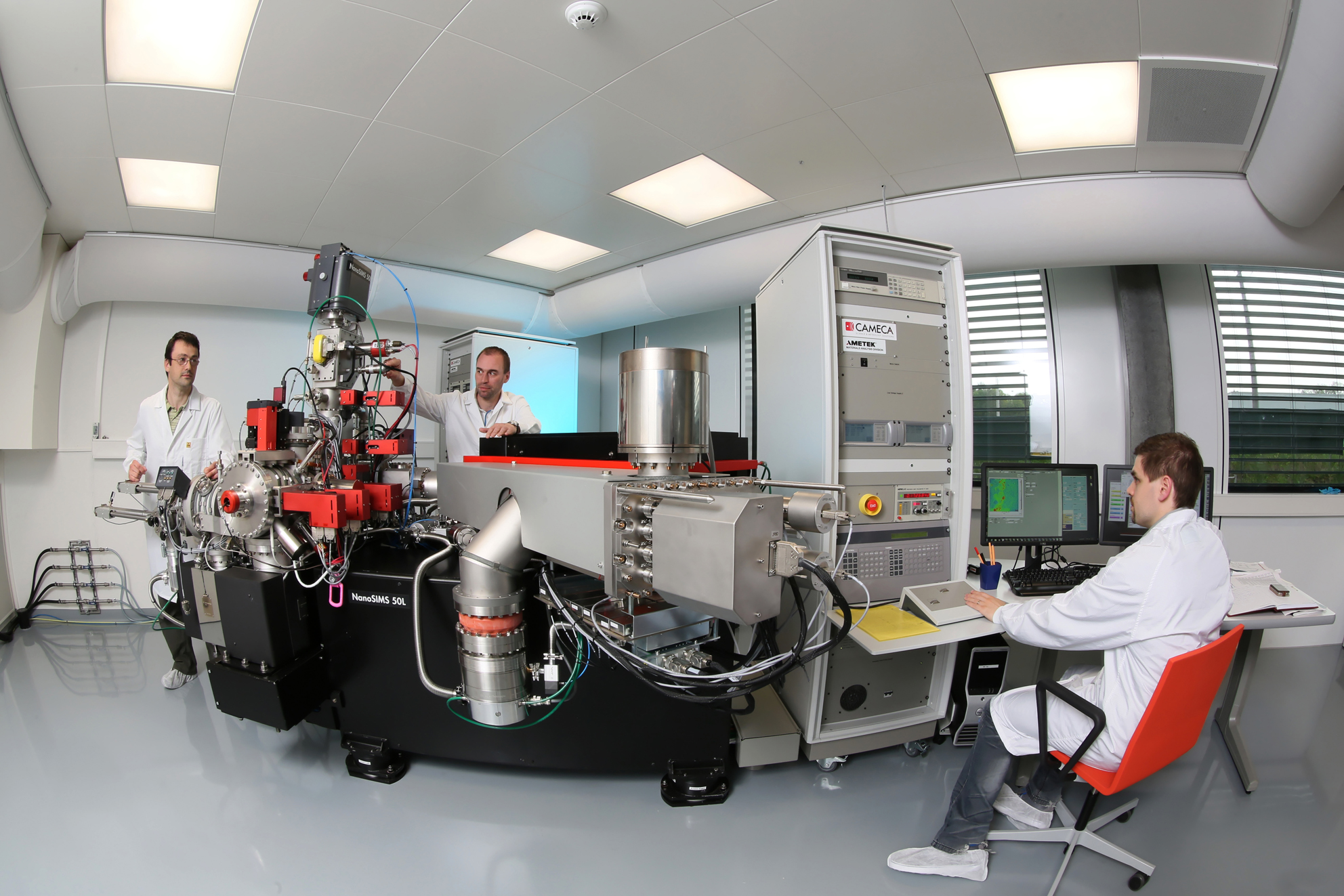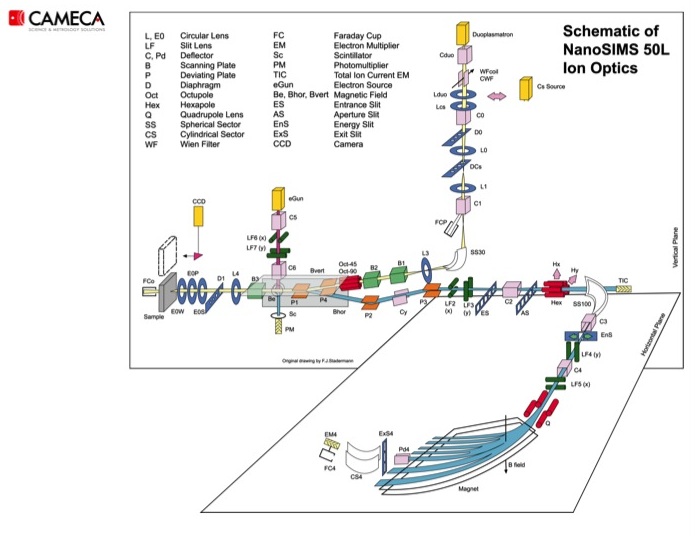The NanoSIMS is an ion microprobe
SIMS is the acronym for Secondary Ion Mass Spectrometry.
The instrument combines:
- High spatial resolution on the sample surface (50-150 nm)
- High mass-resolution mass spectrometry (major to trace element and isotopic composition)
- High analytical sensitivity (detection limits in the ppb range are not uncommon)

The NanoSIMS 50L instrument is, technically speaking, a dynamic, double-focusing, magnetic-sector, multi-collecting ion probe.
The physical basis for dynamic SIMS ion micro-probe analysis is the ability to perform mass-spectrometry on secondary ions sputtered from a solid target by the continuous impact of a beam of charged particles. This primary beam sputters ionized atoms and small molecules (as well as many neutral particles) from the upper few nanometers of the sample surface. In the NanoSIMS, these secondary ions from the sample are transferred with high transmission to a high mass-resolution, multi-collection mass-spectrometer, where they are counted one-by-one in electron multiplier detectors, or as currents in Faraday cups.
The unique strength of the NanoSIMS ion microprobe is the ability to focus the primary beam (either Cs+ or O-) onto an extremely small spot on the sample surface, smaller than 100 nm in linear dimension.
A controlled raster of this highly focused primary beam across the sample surface therefore allows secondary ion images to be produced with a spatial resolution that can clearly resolve structures larger than a few hundred nanometers in lateral, linear dimension. Mass-resolving power sufficient to unambiguously distinguish an isotope of interest from nearby interferences is achieved even at very high transmission for most isotopic systems of relevance to biological samples. This allows relatively precise isotopic and elemental ratios to be quantitatively mapped in a wide range of solids, including biological materials, on length scales much smaller than one micrometer.

The NanoSIMS N50L is equipped with a multi-collector system that allows simultaneous collection of up to 7 different isotopes. Images or maps can be generated from the lightest elements, such as H (e.g. D/H ratios), C (13C/12C ratios), N (15N/14N ratios), O (e.g. 18O/16O ratios) to the heaviest elements like uranium.
Review on NanoSIMS Technical aspects and applications (pdf file, 5.5MB)
Recently, our laboratory succeeded in developing the first CryoNanoSIMS instrument. With a cryo-workflow that includes vitrification by high pressure freezing, cryo-planing of the sample surface, and cryo-SEM imaging, the CryoNanoSIMS enables correlative ultrastructure and isotopic or elemental imaging of biological tissues in their most pristine post-mortem state. This opens new horizons in the study of fundamental processes at the tissue- and (sub)cellular level (see linked publications below).
Correlated Cryo-SEM and CryoNanoSIMS imaging of biological tissue
Elemental cryo-imaging reveals SOS1-dependent vacuolar sodium accumulation